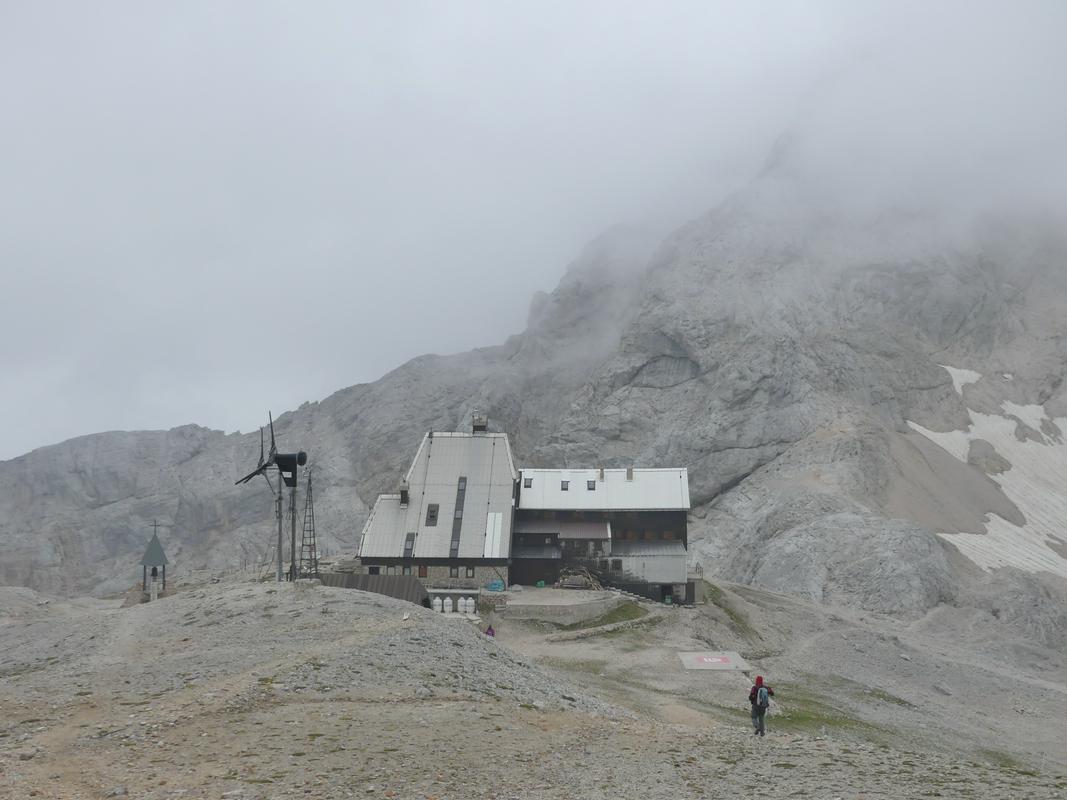
According to Miha Pavšek from the Anton Melik Geographical Institute ZRC SAZU, where they have been monitoring the glacier since 1946, it currently measures between 1.5 and 2 hectares. When we asked when is it supposed to disappear, he replied that “it is difficult to predict precisely. It could be in the next few years, however, it will most likely disappear in a few decades”.
During our visit to Kredarica at the beginning of August, the glacier was visible only every once in a while, because of the clouds and the fog. However, a small spacing revealed a slightly yellow-coloured snow, which covers the glacier. “The snow is slightly yellow because of the Sahara Sand. It happened twice in April, that the rain brought sand from Africa,” explained Pavšek. He and his colleague were on a special mission: they’ve installed an informative board about the glacier on a facility at the Triglav Lodge at Krederica (the board was prepared with the help of the insurance group called Zavarovalnica Triglav, and it was brought by the Slovenian Army’ helicopter) with key information about it: its changing size, the high of its snow cover, the average temperature of the air during the melting season between May and October, and there are also some outstanding photographs of the glacier and glacier cracks.
The Triglav glacier was known as the Green Avalanche or the Green Snow, due to the green ice, which eventually changed into glacial ice. This was noted during the first documented Triglav climb in 1778.
The contraction has stopped in the last decade
Due to its position on the south-eastern edge of the Alps, the glacier, which lies on the north side of Triglav at an altitude of 2,400 and 2,500 meters, is more sensitive to climate changes than the glacier of the central Alps, and that’s the reason for its steadily decreasing surface. In the last couple of decades, it doesn’t have any glacier cracks and it does not move, that’s why it is classified as a small glacier. Between 1983 and 2003, they measured the fastest glacier shrinkage, which stopped in the last decade. The experts are now more optimistic about the life of the glacier than they were years ago.
When we asked why the glacier shrinkage slowed down, Pavšek responded:“There were several snow seasons in the last decade or more precipitation during the time when it’s mostly snowing (from November to April).”

































































